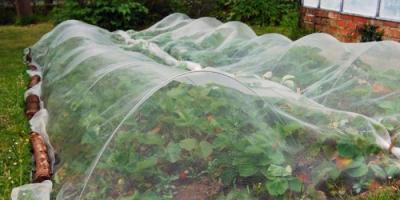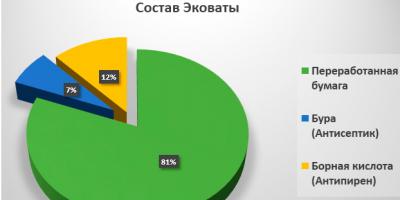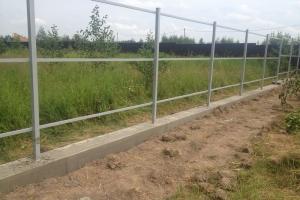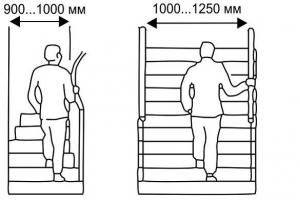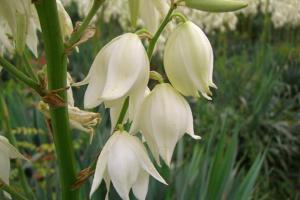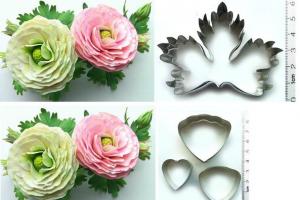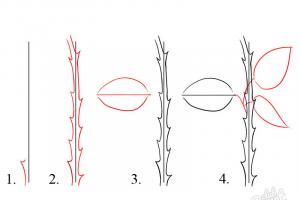Cellulose insulation has mixed reviews; this construction technology appeared in Russia after 1992 and is only beginning to gain momentum. The basis is made up of recycled products, antiseptics and fire retardants, the material has a loose structure. The scope of application includes residential, commercial, public and industrial premises; operation in conditions of excess humidity is allowed. Thermal insulation of ecowool structures is carried out on your own, manually or using special equipment (by dry and wet spraying). The cost of services depends on the complexity of the object, the density and thickness of the insulating layer.
81% of this building material consists of wood cellulose (recycled cardboard), up to 12% is boric acid, which protects the insulation from biological influences and rotting, the remaining 8% is borax (insecticide and fire retardant). These components are non-toxic, non-volatile and natural substances; they make ecowool non-flammable and safe. When the temperature exceeds 90 °C, it releases moisture, stopping the combustion process. It is important that the composition includes boron-based antiseptics and fire retardants; any others reduce the quality of cellulose insulation. An unpleasant odor is a clear sign of marriage.
An important and taken into account property is hygroscopicity. As an insulation material, it has no analogues; it is the only one capable of absorbing excess moisture in the air and releasing it back without the risk of fungus formation. Provided that condensate is removed correctly, the thermal insulation characteristics remain practically unchanged. The absorption limit at which cotton wool retains them is 20%. In practice, this means that ecowool should not be used in areas in contact with groundwater or covered with impermeable materials. But when backfilled into wooden or brick structures, combined with gypsum or breathable films, it has no equal.
The main technical characteristics include:
- Thermal conductivity is in the range of 0.032-0.041 W/mK.
- The recommended density of wool insulation is 35-70 kg/m3.
- Vapor permeability – 0.3-0.35 mg/m·h·Pa.
- Sorptive moistening – up to 16% in 72 hours.
- Sound absorption with a thickness of 5 cm – 63 dB.
- Flammability group – G2.
The nuances of using cotton wool
Depending on the type of insulated structure, one of the methods for installing cellulose wool is selected:
- Manual laying - suitable for working with small volumes; a prerequisite for the technology is “beating” the insulation. It is not enough to simply buy and fill with cotton wool: its density in the package is at least 120 kg/m3, and the optimal range of thermal insulation layer is 35-70. This method should be chosen when insulating horizontal floors.
- Mechanized dry laying - blowing wool through a flexible hose. The best option for insulating frame structures and already in use layered masonry. The use of special equipment allows you to control the density of the insulation.
- Wet-adhesive application - spraying wet ecowool with adhesive additives onto the prepared base. The material is wetted as it comes out of the hose and is firmly attached to the surface with any slope; the thickness of the thermal insulation layer is 5-7 cm; if necessary, the process is repeated after drying.
The scope of application includes wooden and reinforced concrete floors and ceilings, limited spaces between the wall and plasterboard, multi-layer and box-shaped structures, ventilated facades under siding, internal wall surfaces of residential and industrial premises, and attics. Installation of vapor barrier films is not always necessary, but windproof films when insulating roofs and facades are required, as is the organization of condensate removal.

Reviews and opinions about insulation
 “I ordered a service for wet spraying of ecowool for thermal insulation of an extension to a private house. I prepared the walls myself: I removed large debris, covered them with a primer and attached wooden guides in 50 cm increments. The work was carried out in the warm season, the insulation was left to dry for a day, after which the excess was cut off with roller knives. The result was a smooth and dense surface for the cladding. A year later I checked the condition - there is no fungus, the insulation provided suits me.”
“I ordered a service for wet spraying of ecowool for thermal insulation of an extension to a private house. I prepared the walls myself: I removed large debris, covered them with a primer and attached wooden guides in 50 cm increments. The work was carried out in the warm season, the insulation was left to dry for a day, after which the excess was cut off with roller knives. The result was a smooth and dense surface for the cladding. A year later I checked the condition - there is no fungus, the insulation provided suits me.”
Anton, Kazan.
 “I insulated the attic floor with cellulose wool 2 years ago using the dry method. At the end of blowing, the floors there rose by 35 cm; I did not observe any significant shrinkage of the material, perhaps due to the selected layer density (55 kg/m3). The method is good for everyone, I didn’t find any disadvantages except for high prices and weight (in my case it didn’t play a role, but still).”
“I insulated the attic floor with cellulose wool 2 years ago using the dry method. At the end of blowing, the floors there rose by 35 cm; I did not observe any significant shrinkage of the material, perhaps due to the selected layer density (55 kg/m3). The method is good for everyone, I didn’t find any disadvantages except for high prices and weight (in my case it didn’t play a role, but still).”
Roman, Ekaterinburg.
 “I used ecowool for thermal insulation of a frequently used outbuilding; despite all its advantages, I can’t imagine using it in living rooms. The smell from it is not very unpleasant, but noticeable and does not completely disappear. A definite plus is the absence of fungus and mice, condensation does not accumulate in the room.”
“I used ecowool for thermal insulation of a frequently used outbuilding; despite all its advantages, I can’t imagine using it in living rooms. The smell from it is not very unpleasant, but noticeable and does not completely disappear. A definite plus is the absence of fungus and mice, condensation does not accumulate in the room.”
Vitaly, Moscow.
 “For thermal insulation of the roof and walls of the attic, I used cellulose wool; it was applied wet from the outside under breathable vapor barrier films with a density of 65 kg/m3 and a layer thickness of 25 mm; in total, this stage cost 30,000 rubles. I chose this type of insulation for several reasons: fire safety, lack of seams with good permeability and low thermal conductivity. All these properties have been confirmed, I consider the investment justified.”
“For thermal insulation of the roof and walls of the attic, I used cellulose wool; it was applied wet from the outside under breathable vapor barrier films with a density of 65 kg/m3 and a layer thickness of 25 mm; in total, this stage cost 30,000 rubles. I chose this type of insulation for several reasons: fire safety, lack of seams with good permeability and low thermal conductivity. All these properties have been confirmed, I consider the investment justified.”
Andrey, Rostov-on-Don.
 “I blew cellulose insulation dry into the interstitial space of an old brick house. Before that there was only air, but over time the house began to lose heat through the cracks. The process took several days, most of which was spent preparing the holes and checking the condition of the masonry. I am pleased with the result: the first winter showed a reduction in gas consumption by a third. I did not notice any changes in the internal environment of the house.”
“I blew cellulose insulation dry into the interstitial space of an old brick house. Before that there was only air, but over time the house began to lose heat through the cracks. The process took several days, most of which was spent preparing the holes and checking the condition of the masonry. I am pleased with the result: the first winter showed a reduction in gas consumption by a third. I did not notice any changes in the internal environment of the house.”
Leonid, Nizhny Novgorod.

Summary: feasibility of application
The characteristics of insulation are far from universal, but with proper installation and operation it shows good results. Useful properties include safety, absence of toxic substances, the ability to normalize the level of humidity in the room, resistance to harmful microorganisms and rodents, good noise absorption and a fairly low thermal conductivity coefficient. This is one of the few insulation materials that does not form cold bridges and fills all the cracks. The material is consumed without a trace, the cut off excess is reused.
Disadvantages include the need for special equipment for blowing or wet application. Manual backfilling is used only at the stage of building a house or thermal insulation of floors and ceilings along joists, and it is extremely difficult to achieve uniform distribution of the layer and the same density. Reviews note such a disadvantage as significant shrinkage during dry installation - up to 20%, it is even taken into account when performing work.
The material itself does not have load-bearing capabilities; for application to ceilings, open or inclined structures, only the wet-adhesive installation method is suitable, which is more expensive and limited in terms of use. Feedback from builders is clear: wet ecowool should dry well before covering it with sheathing at above-zero air temperatures indoors and outdoors. A minimum of 12 hours is allotted for this.
Manufacturing technology and added additives play an important role in the quality of the material. Companies that provide services for blowing in cellulose insulation use their own raw materials; it is difficult for the owner of the premises to control its composition. The same applies to the density and uniformity of the thermal insulation layer. It’s not difficult to buy cotton wool yourself, but finding a company that operates at a loss or provides equipment for rent is almost impossible.

Price
| Type of service | Recommended insulation thickness, mm | Insulation density, kg/m3 | Price per 1 m3, rubles |
| Insulation of floors and attic using joists, dry installation | 20 – for the floor 30 – for the attic | 35 | 1950 |
| Blowing ecowool under drywall | From 10 | 65 | 3600 |
| Dry installation in walls, inclined and complex structures, attic insulation | 25 | 65 | 3650 |
| Thermal insulation of layered masonry during building construction | From 10 | 65 | 2200 |
| Wet spraying on walls | From 5 | 65-70 | From 400 per 1 m2 with a thickness of 5 mm |
The average price of a bag weighing 15 kg is 500 rubles; when whipped with a construction mixer and manually filling it between joists or masonry, at least 3 packages are needed per 1 m3. The cost of spraying ecowool depends on the complexity of the insulated structure and the density of the layer formed; the most expensive are inclined surfaces, ceilings and suspended elements (due to the introduction of adhesive adhesive additives into the composition).
Modern economic and environmental conditions force developers to look for inexpensive but effective insulation materials. Due to the created demand, manufacturers have produced ecowool, which is a product of recycled paper. The new material is becoming increasingly in demand due to its physical properties, but ecowool has its advantages and disadvantages.
Like mineral wool, it absorbs steam, which it can absorb a lot of, but mineral wool loses its thermal insulation properties, while ecowool does not. Mineral material does not release absorbed water well, and active evaporation occurs in ecowool. Therefore, its use as home insulation is much more practical than mineral wool if you need to ensure free circulation of water vapor through the walls.
The material contains 80% cellulose, which is a product of recycled waste paper. To prevent its rotting, burning, and damage by biological factors, borax and boric acid are added to the composition. Thanks to such additives, biowool is not damaged by mold and rodents, and fire safety is reduced to level G2.
The main properties that determine the use of ecowool in construction are: 
- Low thermal conductivity;
- Environmental friendliness;
- Noise absorption;
- High density;
- Biological resistance;
- Hygroscopicity;
- High vapor permeability;
- Manufacturability;
- Reusability.
Application
The scope of ecowool application is determined by the properties of the material. It is used as:
Thermal insulating material:
- In the floor slabs of apartment buildings and private buildings;
- As insulation in frame structures;
- As a component of warm plaster;
- With multi-layer wall insulation;
- When reconstructing old buildings.
Soundproofing material:
- In floor slabs;
- As a sound-absorbing plaster;
- In the partition walls.
In Russia, ecowool began to be used only in the 90s, when this type of insulation was already one of the most popular on the American continent. But since the 2000s, the number of domestic producers of the material has increased exponentially.
Dry and wet application method
The process of insulation with ecowool is carried out in two ways: dry and wet. In the first case, the material is laid manually or using a compressor, and in the second, a blowing installation is used for this. You can manually insulate a small garage or cottage, which takes a lot of time and material. Wet is considered an industrial method. Features of work in each type of installation are as follows:
Wet method:
- The adhesive during installation is lignin. The wet material adheres well to any walls, creating a dense (about 60 kg/m³) layer. The method is used in brick and block buildings. To do this, sheathing is erected on the walls using wooden beams or metal profiles, and the material is applied using special equipment. During the application process, the cotton wool near the nozzle is slightly moistened with water and falls onto the surface with pressure.
- This method of application is easy and quick. The only drawback is the high cost of special equipment. When applied to ceilings and complex surfaces, in addition to lignin, adhesives are added to the water to enhance adhesion. Excess material is separated, dried, and reused.

Dry method:
This installation option is most often used when filling niches between walls and sheathing cells along floors. To do this, the cotton wool is fluffed up with a drill with a solution attachment in a large container, and poured into the insulation areas. Afterwards, compaction is carried out until depreciation appears. When installing insulation yourself, the rate of cotton wool consumption is calculated using the formula:
where m is the required mass of material, S is the cell area, L is the thickness of the insulation layer, p is the required density of the material.
On horizontal surfaces the density is maintained at about 45 kg/m³, on vertical surfaces 65 kg/m³.
Large volumes of ecowool are pumped using a compressor during construction. Before starting work, the entire sheathing is covered with paper or sheathing material. At the top of the structure there is a hole for a hose through which fluffy material is supplied. The pressure distributes the cotton into all crevices and hard-to-reach places.

Advantages
Comparing ecowool and similar heat insulators, at first glance the difference is not visible. However, they exist, and this makes the material more in demand in the construction of frame and other types of houses. These advantages are:
- The ability to quickly absorb and evaporate water. This is due to low vapor and air permeability, which allows moisture to be absorbed, and this does not impair thermal insulation abilities. Ecowool soaked at 25% will lose only 5% in thermal conductivity.
- The ability to quickly evaporate moisture without changing the structure of the material. Thanks to this, constant humidity is maintained in the frame house.
- Using ecowool, a seamless insulating layer is created. The internal cavities in the ceilings are filled with a homogeneous mass, which eliminates the formation of cold bridges.
- Provides excellent sound insulation. Insulation is used when finishing houses located near highways. Compared to expanded polystyrene, cotton wool has advantages due to its elastic properties, due to which sound waves are damped from the outside.
- Environmental friendliness. The property combines safety for people, animals and the area. Since this substance is paper treated with non-toxic components that do not evaporate.
- Non-flammability due to treatment with a fire retardant compound.
Flaws
In addition to the undeniable advantages, the material has a sufficient number of disadvantages:
- A decrease in heat-insulating properties over time due to a decrease in the volume of the heat-insulating layer due to the compression of the lower layers by the upper ones. Considering the fact that volume loss can reach 20%, more cotton wool is always used than necessary.
- Loss of insulating properties due to absorbed water. Over the course of a year, ecowool absorbs about 1% of moisture, while thermal conductivity losses amount to 9-15%. High-quality wall ventilation helps to partially avoid this phenomenon.
- To install insulation, special equipment is used, and personnel are required to have the skills to carry out the work. But this only applies to the wet installation method.
- During the installation of insulation, a large amount of dust is released, which requires the use of skin and respiratory protection.
- Long-term drying during wet installation, lasting from two to three or more days.
- The rigidity of the material is inferior to expanded polystyrene, which makes it impossible to use it for constructing frameless floor screeds.
- When insulating vertical structures, the low density of the laid wool will cause shrinkage over time, which is why voids are formed.
- Do not insulate surfaces located close to fire sources and heaters, including chimneys and fireplaces. Hot air can trigger the smoldering process.
Experience in using ecowool has confirmed its excellent physical properties, which are not inferior in characteristics to similar heat-insulating materials. Often durability and environmental friendliness play a decisive role when choosing it as home insulation. The low cost of the material, the absence of waste during installation, and the possibility of self-installation put ecowool beyond competition not only in terms of performance, but also financial costs.
First of all, you need to understand what this thermal insulation material is. Ecowool is a modern material that is designed for insulation of a wide variety of rooms. This is a loose, warm, cellulose and fibrous insulation, which contains eighty-one percent cellulose processed by a special method and nineteen percent other additives, such as, for example, anti-foam and boric acid.
When constructing non-residential and residential structures, ecowool is often used. This material is used as insulation in many warehouses, hangars and commercial premises. For rooms with high humidity and condensation is present, ecowool fits perfectly. If temperature control is necessary, ecowool is also used. This is explained by the operating properties of this material.
The only option when choosing materials for construction is to identify the shortcomings, since any material has advantages, but each has its own disadvantages and they vary depending on the characteristics.
There was a lot of talk about the advantages of ecowool and for a very long time everyone turned a blind eye to the disadvantages. There are no ideal products and ecowool is no exception. Ecowool is the most suitable and modern option for thermal insulation of various rooms and numerous disadvantages can be eliminated if this material is used correctly.
Lack of uniform GOST requirements
 Ecowool often judged by its manufacturer, and not the opportunities it gives. Manufacturers who do their job poorly spoil the reputation of ecowool. Since there are no uniform standards and legislative requirements for the production of ecowool, this allows fraudsters to use materials that do not meet the characteristics of ecowool. By saving on one of the most important components of raw materials - waste, the products reduce their insulating, fire-fighting, structural and antibacterial properties.
Ecowool often judged by its manufacturer, and not the opportunities it gives. Manufacturers who do their job poorly spoil the reputation of ecowool. Since there are no uniform standards and legislative requirements for the production of ecowool, this allows fraudsters to use materials that do not meet the characteristics of ecowool. By saving on one of the most important components of raw materials - waste, the products reduce their insulating, fire-fighting, structural and antibacterial properties.
Until ecowool is subjected to uniform standards, consumers will buy the product blindly. Recommendations when purchasing ecowool:
- You need to collect all possible information about the company producing ecowool. This information is available on forums dedicated to construction, where many users devote more than one topic to this issue, they criticize and praise different companies. Based on the experience of others, you can draw appropriate conclusions and make a choice.
- It is necessary to visually examine the material before purchasing it. Externally, ecowool should look like fluff, there should be no fractions or large impurities, and ecowool should not resemble cut paper or, for example, dust.
- The fire protection characteristics of ecowool should be excellent. When she is exposed to fire, ecowool should smolder slowly, and when contact with fire ends, it should immediately die out.
- The ecowool packaging must be intact and undamaged, and the material should not be wet to the touch.
- High-quality ecowool has a grayish tint; the presence of yellow or light color is unacceptable - these are indicators of low-quality raw materials during manufacturing.
- When shaking the ecowool, sand should not appear. The presence of finely dispersed fractions means that most of the boron components were introduced into the structure of the material incorrectly.
Low strength and low rigidity
One of the disadvantages of ecowool is the presence of moisture in the insulation when it is applied to the surface using the adhesive method. Moisture can negatively affect the insulated surface, therefore, before starting finishing work, it is necessary to dry the layer for some time.
Installation tips ecowool using the glue-wet method:
- Complete drying must be coordinated with other construction work.
- It is advisable to carry out the work in the spring or summer, when it is warm.
- You need to choose the right surface on which the ecowool will be placed. It is not recommended to use materials that are poorly permeable to moisture, such as lining.
Shrinkage of ecowool during installation
 Shrinkage is another disadvantage of ecowool. It must be remembered that shrinkage occurs only if the installation was done incorrectly; professional workers never forget about this feature and distribute the load evenly.
Shrinkage is another disadvantage of ecowool. It must be remembered that shrinkage occurs only if the installation was done incorrectly; professional workers never forget about this feature and distribute the load evenly.
To prevent shrinkage from occurring, you must remember:
- hollow coverings must be filled to excess, and the cotton wool must be lightly compacted
- if backfilling is done in an open way, the layer must be formed ten percent thicker than the width originally planned.
High price of ecowool
A significant drawback in the eyes of buyers is high price for ecowool. In the absence of skills and all the necessary tools, it is impossible to do installation using the wet-glue method on your own, and clients pay for the work of specialists installing ecowool. In this case, the cost increases several times.
This disadvantage is conditional, because if you have experience or minimal theoretical knowledge, then it is quite possible to make excellent styling with your own hands.
With an ecowool density of thirty-five, a layer thickness of one hundred and fifty millimeters, insulation per cubic meter will cost about nine hundred rubles, and for one square meter - about one hundred and thirty rubles.
Flammability of ecowool
 This insulation there are no ideal indicators fire safety. This is quite normal, since it is a product of wood origin. However, ecowool does not burn, but simply smolders at high temperatures; this insulation does not allow the spread of fire.
This insulation there are no ideal indicators fire safety. This is quite normal, since it is a product of wood origin. However, ecowool does not burn, but simply smolders at high temperatures; this insulation does not allow the spread of fire.
All ecowool defects are nominal. You need to choose the right product and then the insulation will meet all the properties that are declared for this material.
Ecowool is often used to insulate wooden houses, ecowool is not recommended for houses made of foam blocks.
Ecowool also has the disadvantage of low rigidity and low compressive strength. However, this drawback is revealed if there is no flooring or if the backfill is dry. If platforms or bridges are organized before direct insulation, then the deficiency will not be identified. The insulating layer should be below the platforms or bridges. If problems arise with low rigidity during self-insulation, when the floor is screeded, a frame that forms cells will easily solve this problem.
Despite the fact that ecowool is an excellent thermal insulator, after a certain time these properties are greatly reduced, and thermal conductivity increases. On this the following factors influence:
- ecowool becomes smaller in volume during operation, losing approximately twenty percent of its original mass. In this regard, when laying it is better to use twenty to twenty-five percent more insulation, this allows you to cover a volume that will become smaller in the future.
- A lot of moisture is absorbed into ecowool, from nine to fifteen percent, and during the year about one percent of moisture accumulates inside. Every time moisture increases, thermal conductivity increases by one to two and a half percent. Based on this, it is necessary that the thermal insulation layer is ventilated and can release this moisture to the atmosphere.
 When comparing ecowool and polystyrene foam boards, the first significantly loses in rigidity, this does not make it possible to use it for frameless thermal insulation independently when installing floor screeds.
When comparing ecowool and polystyrene foam boards, the first significantly loses in rigidity, this does not make it possible to use it for frameless thermal insulation independently when installing floor screeds.
Experts do not recommend using this insulation close to open sources of fire, for example, near stone pipes or chimneys. Despite the fact that it is simply smoldering, it is worth making additional protection. This is done as follows: install special fences consisting of basalt fire-resistant mats and asbestos-cement slabs. The surface must be foil-coated, then it will reflect heat.
What is ecowool? This is the collective name for thermal insulation materials that are made using special technology, often from recycled materials. The material cannot be called new: it has been used since about the middle of the last century and competes with modern types of thermal insulation.
Manufacturers position ecowool as an environmentally friendly material with high performance, which is located in the affordable segment of the construction market. Let's look at how relevant these statements are together.
Composition and properties of insulation

The following components are usually used in the manufacture of ecowool:
This composition is responsible for the low price of thermal insulation and its environmental safety. In essence, there is no toxic component, however, relatively good technical characteristics are preserved.
Now let's talk about properties. The performance characteristics of ecowool look like this:
Flammability class - G2. Under the influence of high temperatures, crystallized liquid is released from the fibers of the material; accordingly, the insulation is poorly flammable and does not support combustion processes.
Biostability – high. The composition contains boric acid and borax, which neutralize almost any external factors and aggressive environment, making the material unsuitable for consumption by rodents and other pests.
Thermal conductivity indicators: 0.032–0.041. The material reliably protects interiors from drafts and cold winds, reduces heat loss, and helps save on heating costs in the winter.
Density – up to 75 kg/m3. This ensures reliable sound insulation of the building and forms a reliable moisture-proofing layer.
In addition, ecowool is not produced in sheets or rolls, so during installation a monolithic thermal insulation is formed, completely eliminating cold bridges, seams and joints.
Advantages and disadvantages of insulating material

Despite the assurances of manufacturers that ecowool is the standard among thermal insulation materials, these statements should not be completely trusted. This is a common marketing ploy designed to increase sales.
The material has a lot of undeniable advantages, but, like its analogues, it is not without serious drawbacks. Let's start with the advantages.
The advantages of ecowool are the following characteristics:
Low moisture permeability. The capillary structure of the material allows it to absorb water without losing its beneficial qualities. For example, if mineral insulation is moistened only by 1%, heat losses will increase almost 10 times. If ecowool is moistened by 25%, decreased thermal conductivity will not exceed 5%. This is a very good indicator.
Seamless insulation. The loose mass of filler fills all voids, completely eliminating cold bridges. To achieve a similar result with roll or sheet insulation, the material must be laid in 2-3 layers, which increases the final cost of the work.
High level of noise absorption. Ecowool is an excellent way to insulate buildings located on busy streets, near federal highways, railway lines and airports.
In addition, an undeniable advantage is the affordable price, which elevates ecowool to the rank of the most popular insulation for private construction.
Let's move on to the problems. Serious disadvantages of thermal insulation include the following:
Gradual decrease in thermal insulation properties, increased heat loss. This is due to the fact that the material decreases in volume or becomes oversaturated with moisture. You can avoid problems by laying insulation with reserve in 20-30% from the calculated volume and making the layer ventilated so that moisture can evaporate into the atmosphere.
Difficulties during installation. In order for the insulation to fully meet the technical specifications, special installation equipment will be required. This means that you will have to hire a team of professionals, and this is an additional expense.
Waste of time. Ecowool can be laid in two ways: dry and wet installation. The first option creates a lot of dust during the work and does not guarantee high-quality compaction. The second one creates a high-quality layer of thermal insulation, but the material will dry out about 3 days, which is not always possible at the pace of modern construction.
Relatively low stiffness. If we compare ecowool with other types of insulation, for example, foam boards, its rigidity will be noticeably lower, which prevents the material from being used for frameless insulation.
Shrinkage of the material. It occurs with vertical insulation already in the second year. There is no way to avoid this problem.
Burning speed up to 30 seconds. This means that the material does not burn, but smolders slowly. The result is a risk of ignition of adjacent materials and high smoke levels.
As you can see, ecowool is not perfect thermal insulation. This is a rather specific material with a limited scope of application and a unique installation technology. In addition, assurances of environmental safety also raise doubts: boric acid and borax can hardly be called fillers that are safe for humans.
Comparative characteristics table
| Processed natural materials | ||||||
| Artificial insulation containing adhesives | ||||||
| Synthetic polymers | ||||||
What is the difference between ecowool and basalt insulation?

To answer this question, a little clarification is required. The following components are used in the production of basalt insulation:
Considering that the main component is basalt, all insulation of the stone-basalt group is usually combined under the term “basalt wool”.
In fact, basalt insulation is insulation that is made entirely from this rock. This material is not used in residential construction. Its intended use: insulation of equipment and pipelines.
If you compare ecowool and insulation materials of the stone-basalt group, you will notice a lot in common. In particular, both materials have similar thermal insulation properties. However, basalt wool has a higher density, which requires a reliable frame.
Ecowool has a light structure and therefore does not increase the load on supporting structures. In addition, basalt insulation is produced in the form of slabs, which leads to the formation of voids at the joints.
Service life of basalt wool does not exceed 40 years– the material is gradually destroyed under the influence of pathogenic microflora. Ecowool lasts up to 70 years, without loss of original properties.
Real consumer reviews we found on the Internet

To better understand the feasibility of ecowool insulation, you can refer to the reviews of people who have already used this material in construction.
Sergey. forumhouse.ru
I bought ecowool to insulate a country house. The workers who were involved in the construction recommended this particular material. The insulation does not require additional layers of vapor and waterproofing, which was the decisive factor. The house is worth 3 years already, I have no complaints about the insulation, only positive emotions.
Kirill. vk.com
I don't recommend ecowool. 5 years I lived in a house insulated with this insulation and was constantly being treated for allergies. When I changed my place of residence, the problems disappeared. The doctor said that the body’s reaction was provoked by cellulose (an allergy to paper and library dust).
Note that there may be a case of individual intolerance to the components, so before choosing thermal insulation it makes sense to consult a doctor to avoid unpleasant consequences.
Yuri. otzovik.com
Very pleased with the ecowool. The material fully complies with the declared characteristics, provides reliable insulation, is convenient to use and attracts attention at an affordable price. I found only one drawback: compliance with storage conditions. When exposed to a humid environment, the material becomes covered with a hard crust, which complicates further use.
Also, many users express concerns about the content of borax and boric acid in the insulation. In addition, dissatisfaction is caused by the use of special equipment, but this is a prerequisite for high-quality installation, which cannot be excluded.
TOP 3 trusted manufacturers

ISOFLOC. A German brand offering high-quality ecowool for multi-purpose use. Insulation has earned positive reviews from professional builders around the world.
TERMEX. Finnish company supplying insulation materials to the Russian market since 1988. The manufacturer carefully controls product quality and adheres to a reasonable pricing policy.
"Equator". Russian company engaged in the production of insulation since 2007. The production line is fully automated and uses high-tech equipment. Currently, it is one of the largest domestic producers of ecowool.
In addition, the company’s insulation products enjoy the trust of consumers "Nanovata" And EKOVILLA.
Here's what they write on the Internet - maybe it will give you something to think about :-)
ECO WOOL: DEW POINT AND VAPOR PROOF
Ecowool as insulation changes the usual attitude towards vapor barrier. And the fact is that it doesn’t need a vapor barrier at all. Let's get to the heart of the matter:
1. The use of vapor barrier films when using fiber insulation is necessary by definition. Otherwise, the warm air coming through the insulation, cooling down, reaches 100% relative humidity and condensation occurs in the insulation array (the so-called “dew point”). In particularly cold seasons, this leads to the accumulation of moisture in the insulation mass, its freezing, mechanical rupture of the insulating layer and its subsidence. The phenomenon is impressive: insulation opened in winter with a damaged vapor barrier resembles frozen small waterfalls in the Caucasus Mountains.
2. Technical problem: if a vapor barrier is a material with micro-holes at the molecular level (a water molecule is larger in size than air molecules and cannot pass through the membrane), then we can imagine the requirements for the tightness of the seams of a rolled vapor barrier. Often (in 99% of cases) seamless vapor barrier is either technically impossible or associated with large labor costs and financial costs. In addition, the installation of insulation into the rafter system of a complex multi-slope roof occurs when it is impossible to form a complete, seamless insulation array due to the design features of the rafter system.
This feature of the vapor barrier is taken into account when designing roofs: many have encountered condensation on metal tiles. This is nothing more than a consequence of a violation of the vapor barrier layer. Awareness by designers of the impossibility of ensuring 100% insulation from air vapor leads to design changes - preventive measures - the organization of ventilated air gaps. Ecowool does not require vapor barrier. Fluffy cellulose fibers absorb moisture from the warm air passing through the insulation array, leaving the air gaps between the particles of the material dry. At the same time, Ecowool is capable of changing humidity up to 24% without losing its insulating properties. Thus, when air passes through Ecowool, it not only cools closer to the outer surface, but also a natural decrease in the absolute and relative humidity of the air occurs. And since there is no “regime” of 100% humidity, there is no “dew point” phenomenon as such. Those. In essence, Ecowool is a complete, seamless array of vapor barrier and insulation at the same time, while the breathable structure allows, in addition to water vapor, other gases, incl. carbon dioxide. Gaseous impurities in room air are removed during air exchange, incl. through breathable structures. When using Ecowool, you can abandon the constructive organization of the ventilated air gap in the roof and... get another unexpected but pleasant result. Ecowool placed in direct contact with metal tiles or corrugated sheets reduces their membrane (rattle) properties. Hence the high sound insulation index of such a “roofing cake”.

